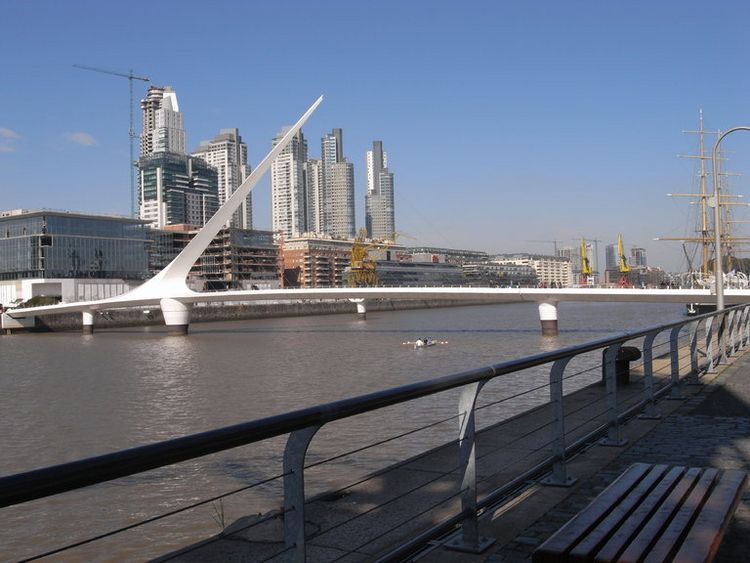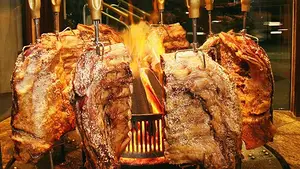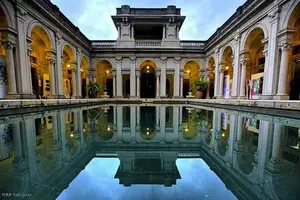Discover the charm of Buenos Aires
1 cities |
14 attraction(s) |
total distance 34
km
 TIPS
TIPS
Day1
Day2
Day3
Day1: Buenos Aires
8 attraction(s) ·
8 km
1
Walking west across May Square, along May Avenue, you will come to the largest square in Buenos Aires - Congress Square. Here, tourists and locals alike feed the adorable pigeons. The square is adorned with two famous monuments, representing the Constituent Assembly of 1813 and the Congress of 1816. It is worth mentioning that the success of these historical events determined the foundation of Argentina's future independence.
2
km
2
The Buenos Aires Obelisk is an iconic building located in the Republic Square, at the intersection of Corrientes Avenue and 9 de Julio Avenue. It was built in 1936 to commemorate the 400th anniversary of the city of Buenos Aires. The designer of the Obelisk was architect Alberto Prebisch, and it reaches a height of 67.5 meters, making it one of the tallest structures in South America. The Buenos Aires Obelisk is one of the most popular tourist attractions in the city, attracting thousands of visitors who come to admire its beautiful architecture and spectacular views.
2
km
3
May Square was built in 1580, coinciding with the birth of Buenos Aires city. The square, originally called "Great Square" or "Victory Square," bears witness to various historical periods and popular movements throughout Argentina's hundreds of years of history. It was named "May Revolution" to commemorate the struggle for independence against Spanish colonial rule sparked by the Argentine people in May 1810. Indispensable to the development of the Argentine Republic and the city, this square is a symbol of Argentina, attracting many domestic and foreign tourists due to its unique charm. On weekends, the square often hosts various popular activities such as commemorative parades, disaster relief fundraising, and artistic events.
1
km
4
Puerto Madero is located in the eastern part of Buenos Aires, adjacent to the old port district. It is an important area for Argentina's import and export trade and maritime industry. Since the 1990s, the real estate value in this area has been increasing, making it one of the most prosperous tourist areas in the city, attracting visitors from all over the world. Here, you can see the former warehouses cleverly transformed into modern LOFTs, offices, high-end hotels, and restaurants. The fusion of new architecture and the old style from the 1990s forms a unique landscape.
1
km
5
The Puente de la Mujer, a white cable-stayed bridge spanning 160 meters across two shores and costing six million pesos to build, resembles a shark in form but depicts a couple dancing tango. Designed by Spanish architect Santiago Calatrava, who was inspired by a tango performance, it is one of the significant gastronomic destinations in Puerto Madero, offering a variety of cuisine.
1
km
6
The Casa Rosada, located on the east side of Plaza de Mayo, is a Spanish-style building famous for its iconic pink color. In 1873, President Sarmiento painted the presidential palace this color to symbolize the unity of various political factions. Currently, the government uses the building for work and meetings Monday through Friday, while it is open for free public visits on weekends. To visit the Casa Rosada, tourists must make a reservation online in advance, then queue up upon arrival to receive a group number before entering for a 30-minute tour with Spanish and English-speaking guides.
4
km
7
Recoleta Cemetery is one of the acclaimed attractions in downtown Buenos Aires, where many political figures, historical heroes, and business elites are buried. The tombs are of various styles, like a European architecture exhibition. There are also many sculptures built by relatives of the deceased in the cemetery, which can make people feel the remembrance and tribute to the departed. Honoring death is a unique culture of Argentineans, and they believe that only when life ends can people truly show the meaning and value of their lives. The remarkable tomb of Eva Perón, located at C7-88, has become an important destination for many tourists. Whether you are a hurried visitor or a traveller with more time, visiting Recoleta Cemetery will be an unforgettable experience.
1
km
Day2: Buenos Aires
4 attraction(s) ·
10 km
1
The Boca District is located in Buenos Aires. In the mid-19th century, it was a settlement for Spanish and Italian immigrants who were mostly involved in beef processing and transportation industries. Therefore, they painted their houses in bright colors using leftover ship paint, creating a unique artistic atmosphere. The Boca District is also where Maradona's Boca Juniors team became famous and their home games are held at the famous Bombonera Stadium, located four blocks from Caminto Street Museum, which displays the glorious history of the team and other football achievements, making it a great experience for football fans. Additionally, the Boca District is one of the birthplaces of tango dancing.
Tourists must be aware that the security in the Boca District is very poor. Do not wander outside tourist attractions, especially at night. Even within tourist attractions, be sure to protect your personal belongings. Never venture to the slums on the other side of the river where the security situation is even more dangerous. Your safety is of utmost importance.
1
km
2
This traditional alley & street museum with vividly painted houses was inspired a famous tango song.
9
km
3
One of the busiest places in Buenos Aires, Plaza Italia is located in the Palermo district. At the corners here are the entrance to the Buenos Aires Zoo and the Buenos Aires Botanical Garden. The square is surrounded by bustling crowds, serving as a hub for urban transportation and shopping centers.
2
km
4
Palermo is an area where many middle-class families reside in Buenos Aires, with wide streets, large parks, and a zoo. Therefore, it has become a popular destination for family weekend leisure and picnics. In addition, it is also a hub for the restaurant industry where you can taste a variety of Latin American cuisine, including Peruvian, Chilean, Brazilian, Mexican, and Asian restaurants such as Japanese and Vietnamese.
Day3: Buenos Aires
3 attraction(s) ·
3 km
1
Since 1986, this place has been turned into a natural ecological reserve, covering an area of 360 hectares. The reserve is home to a wide variety of wildlife, especially birds, with a total of 250 species. On weekends, many families come here for picnics and bike rides. For tourists who want to get away from the hustle and bustle of the city center, this is definitely a great place to relax. Due to its proximity to the city center, only a few stops away, it has a peaceful atmosphere and is a comfortable paradise. The recommended way to visit is to rent a bicycle at the park entrance and take a full tour of the park at a rate of 20-30 pesos per hour. In addition, there is a monthly "night tour" led by a guide. Departure is at 8:30 pm and advance phone reservation is required.
2
km
2
May Square was built in 1580, coinciding with the birth of Buenos Aires city. The square, originally called "Great Square" or "Victory Square," bears witness to various historical periods and popular movements throughout Argentina's hundreds of years of history. It was named "May Revolution" to commemorate the struggle for independence against Spanish colonial rule sparked by the Argentine people in May 1810. Indispensable to the development of the Argentine Republic and the city, this square is a symbol of Argentina, attracting many domestic and foreign tourists due to its unique charm. On weekends, the square often hosts various popular activities such as commemorative parades, disaster relief fundraising, and artistic events.
2
km
3
San Telmo is an area that blends modern elements with historical culture, immersing people in a rich historical atmosphere. The cobblestone streets here are winding, reminiscent of colonial-era architecture. Despite being just steps away from the city center's Plaza de Mayo, you will feel like you are in Argentina 100 years ago.

































